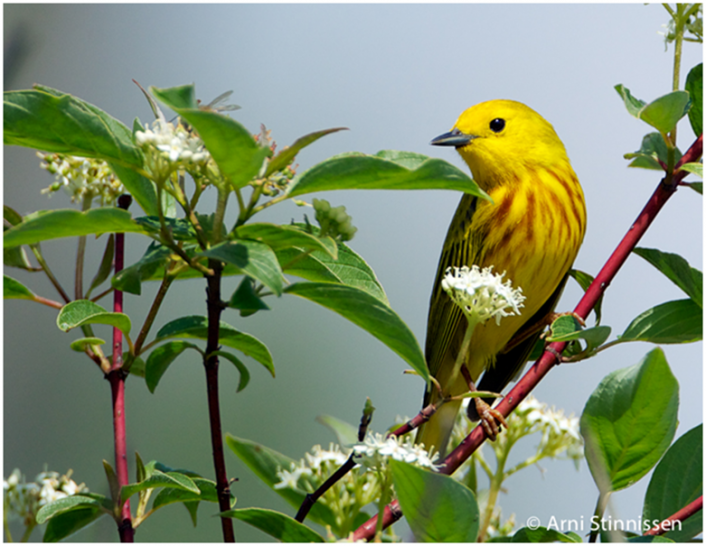One of the most widespread and prettiest species of birds that graces our landscape is the Yellow Warbler! The male is a bright yellow, with reddish stripes on its breast while the female is a much more subtle yellow with a green tinge to the wing and back feathers.
Yellow Warblers are found everywhere on the continent during the breeding season. They favour shrubby wetlands, especially willow thickets, but are also found in forested areas and even community gardens and parks.
Soon after their arrival in April and May, males begin courting with songs, singing as many as 3,000 songs in a single day. Following a successful courtship, they get down to the business of raising a family. The female builds a small cup-like nest in a tree or shrub. Four to six eggs are laid, which she alone will incubate for about 11 days, while the male stands on guard and brings her food. She will also feed the young with food brought to her by the male. They have proven to be a very beneficial bird to farmers and gardeners as they devour many pest insects during the breeding season. The most favoured food however is leaf-eating caterpillars. The young will fledge in 8 or 9 days and will be completely independent of their parents in a further 3-4 weeks.
When a Cowbird, (a brood parasite bird which lays its eggs in another species’ nest for the host bird to incubate and raise its young, most often at the peril of the host’s young) lays its eggs in a Yellow Warbler’s nest, the female warbler will build another nest on top of her original nest, covering the cowbird’s egg as well as her own. She will then lay eggs in her new nest. As many as six layers of new nests have been found on top of the original nest.
Having taken advantage of the long daylight hours of our spring and early summer to feed their young, Yellow Warblers don’t linger in our area for a long period of time as they begin their migration back to the south beginning in mid August.
If you are travelling to Central America or the Caribbean this winter, be sure to keep your eyes open for the Yellow Warbler as they are very plentiful and quite easy to identify!
Article by David A. Homer, President of the Board of Directors

